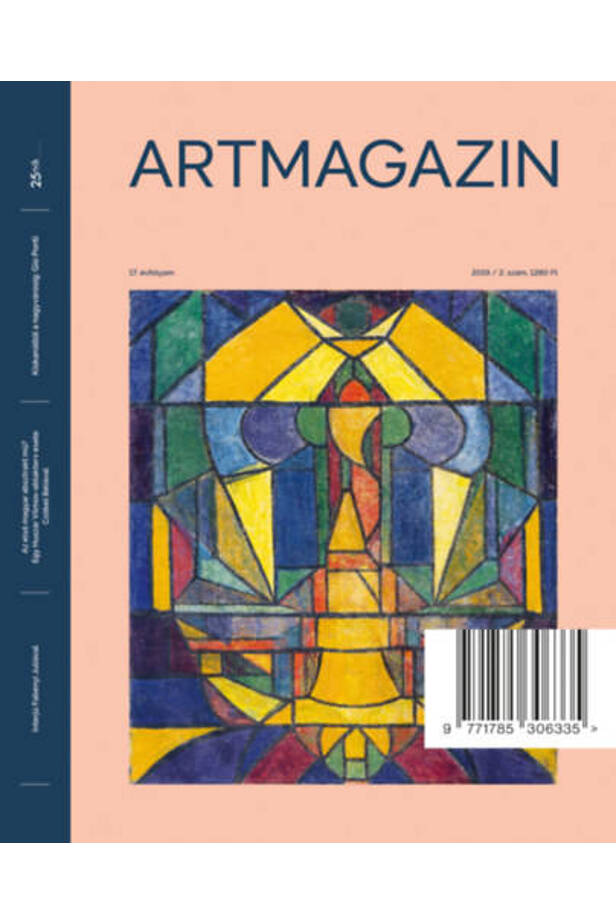Artmagazin 113 - 2019/2.
Delivery time: 2 - 3 business days
Quantity:
HUF 1,190
Description
Artmagazin's articles are published in the field of contemporary and classical art, focusing on Hungarian and international events, research, trends and trends. Our interest extends to border areas: fashion and design are as much a topic here as the connection points between theater, architecture and music. ARTMAGAZIN 113. Now that the format of the page had changed a little, and we had to rethink the meaning and manner of each amendment, from the smallest to the determinants such as whether the barcode should be large on the front page, our articles were organized around this topic as well. That is, around the forms, the formation of forms. They examine the relationship between new lifestyles, or even social frameworks, and changes in art. Anyway, this is almost always possible by looking back, there are so many comfortable old forms living together with the new ones that are just trying, maybe annoying, that you need special talent to recognize the direction in which things will move. And of course, we already have trend research, but we don’t yet have verified data on how confidently trend researchers have predicted what’s going to be fashionable. So on the front page we see a work that its owner, Béla Czóbel, certainly did not think in the twenties would destroy something of great value when he smears it with cover white and paints his own composition on the other side of the canvas. The story has not yet been fully explored, but probably a picture of Vilmos Huszár left with him or given to him directly awaited the recent resurrection under the white layer of paint. If this piece of canvas painted on both sides were two paintings and auctioned, it is almost certain that the work of Vilmos Huszár, a member of the De Stijl movement promoting the absolute dominance of shapes and colors - which is perhaps a glass window design - would sell for many times as Czóbel . Another question is what kind of life the artists of the De Stijl movement, or the Bauhaus, which unfolded almost in parallel with it, envisioned as ideal, and how utopian it was. After all, a lot of the original Bauhaus ideas came true when IKEA made them a little friendlier and adapted them for mass production - says one of our interviewees, the Hamburg art historian Hubertus Gassner. The Italian path of modern design was also paved with the intention of improvement - but at least with the goal of mass production; In our presentation of Gio Pontit, you can see how the utopian idea of well-designed has permeated a period. And for those who aren’t impressed by the refined shapes, squares, or shades more than the base colors, there’s an article about two wonderful retrogrades (who were also very modern as inventors of the idea of a designed environment), John Ruskin, and William Morris, and a a study of the last era of Károly Ferenczy, in which, in an interesting way, problems of form also played a major role, probably under the influence of his son, the sculptor Béni Ferenczy. Our conversation about the contemporary sculpture, which was included in the Antique Collection of the Museum of Fine Arts, is more precisely about space and form formation, and antique patterns and platonic thoughts also appear in connection with Kata Káldi's mosaic depicting geometric form and its plaster previews. Our interviews are about the collection of works and the ideal forms of preserving and presenting them, while one of our writings documents just what happens to a group of sculptures left free, how the space of remembrance is filled with emotion. One interesting question remains for the last time: are you sure that the finished works of art are the ideal forms of preserving thoughts? What, if we don't have to create so much, to keep our brains going all the time and leave its documents in the world in as diverse a form as possible, and sometimes even directly encrypted? CONTENTS ARTANZIX Interview Topün Tünde: DON'T LET'S TALK TO EACH OTHER IN A CIRCLE Circle We asked Julia Fabényi, the director of the Ludwig Museum, now 30 years old, It was like '68 conversation with Hubertus Gassner's art historian-Professor Design History Spruce Zsanett: Csonkanálási to the big city, or the Italian Le Corbusier Gio Ponti's oeuvre exhibition in Paris Memorial Boros Géza: Eleven Memorial Study Gosztonyi Ferenc: Secondly comments from Károly Ferenczy's last creators Circle Question Róza Szilágyi Tekla: TUTAJ-SYMPOSION Statue of Zénó Kelemen in the Antique Collection of the Museum of Fine Arts One picture Tünde Topor: PAKSNAK, HAND, OR THE CONSCIOUSNESS OF ART J ohn Ruskin and William Morris Selected Writings Gutenberg Galaxy Miklós Fáy: LEONARDO'S GRIPPERS Walter Isaacson: Leonardo da Vinci - Close Up of Genius ARTANZIX
| publisher | Artmagazin Kft. |
|---|---|
| scope | 80 |
| volume unit | oldal |
| ISBN | 9771785306335 |
| year of publication | 2019 |
| binding | pur adhesive bonding |


